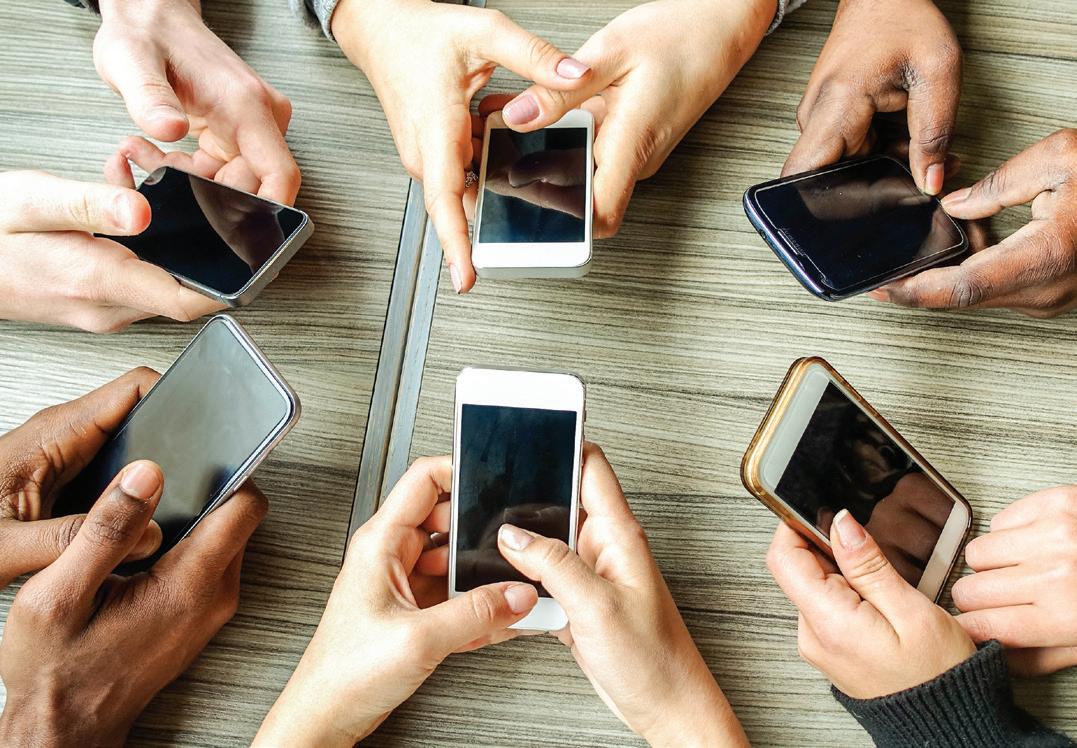
2 minute read
Connecting During a Crisis
Connecting During a Crisis The “smartphone-mostly” crowd keeps growing
f you think the stay-at-home orders of the coronavirus pandemic have been tedious, imagine enduring the isolation without the internet. Fortunately, almost everyone is online these days—a nearly universal 90 percent of adults in the United States, according to Pew Research Center’s tracking surveys.
Advertisement
Pew is an old hand at this. It has been asking Americans about their use of technology since the mid-1990s, back when the term “Internet” was so new it required explanation. The New York Times first referred to the internet in 1988, and for years afterward the Times felt the need to explain the internet to its readers. “The linkage of computers known as the Internet,” the Times intoned as late as 1996.
Maybe the Times still felt the need to explain the internet in 1996 because only 23 percent of the public was online, according to Pew. By 1998, 41 percent of adults were online, and nearly half of them (46 percent) had started using the internet in the past year. In 2000, more than half—52 percent—were online. By 2010, it was 76 percent. In 2019, the figure hit 90 percent. Even if you break the numbers down by age, just about everyone is online—100 percent of 18-to-29-year-olds, 97 percent of 30-to-49-year-olds, 88 percent of 50-to-64- year-olds, and 73 percent of people aged 65 or older.
Despite near universal adoption of the internet, a digital divide still exists. The divide is not between those who use the internet and those who don’t, but how
2019
MOSTLY ON THEIR 15
they get online. Some mostly use big screens (laptops/ desktops/tablets) and some mostly use small screens (smartphones).
Pew first asked about smartphone ownership in 2011. At the time, just 35 percent of adults owned a smartphone and a much larger 75 percent owned a desktop or laptop computer. Since then, ownership of desktops/laptops has stalled, while smartphone ownership has soared. Still, it took until 2019 before ownership of smartphones surged ahead of the big screens. Eightyone percent of adults owned a smartphone in 2019, including more than 90 percent of those under age 50. Desktop/laptop ownership was unchanged in 2019 at 74 percent, and 52 percent owned a tablet computer—a figure that has barely budged in years.
The smartphone is becoming the primary internet portal for a growing share of Americans. This is a critical shift for anyone who communicates online with customers, clients, or constituents. More than one-third (37 percent) of adults told Pew in 2019 that they access the internet mostly through their smartphone, a figure that has nearly doubled since 2013. Among 18-to-29- year-olds, the clear majority (58 percent) go online mostly by smartphone, as do nearly half of 30-to-49- year-olds. In every age group, the smartphone-mostly crowd is growing by leaps and bounds.
“These trends are part of a broader shift toward mobile technology that has changed the way people do every
PERCENT WHO GO ONLINE SMARTPHONE TOTAL ADULTS
Aged 18 to 29
Aged 30 to 49
Aged 50 to 64
Aged 65-plus
37% 58 47 27
thing,” says Pew.
2013
19% 41 24 6 2 Pct-point
+18 +17 +23 +21 +13
Source: Pew Research Center, Mobile Technology and Home Broadband 2019



